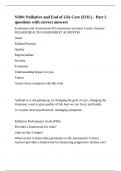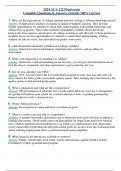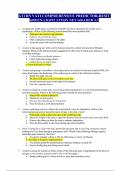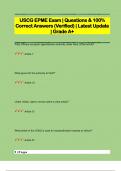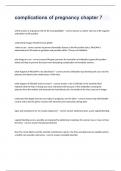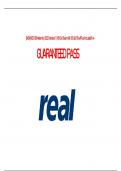Exam (elaborations)
N304: Palliative and End of Life Care (EOL) - Part 2 questions with correct answers
- Course
- Nurs 304
- Institution
- Maryville University Of St. Louis
Evaluation and Assessment-FH assessment acronym Correct Answer-FRASER HEALTH ASSESSMENT ACRONYM Onset Palliate/Provoke Quality Region/radiate Severity Treatment Understanding/impact on you Values Assess every symptom with this tool! *palliative is not giving up, its changing the goal...
[Show more]
